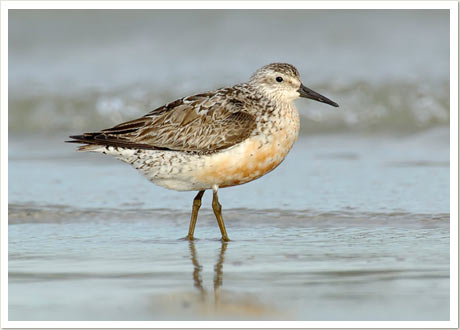|
| Red Knot |
PHOTO: 1 2 3 |
 |
|
 |
 |
| Red Knots visit the beach every spring and fall during migration. They feed very rapidly to gain fat reserves, and then fly long distances to reach their next destination (perhaps Manitoba or the Bahamas). Plymouth Beach is one of very few places in Massachusetts where this species will feed. Though visitors once counted Red Knots in the hundreds, you will now be lucky to see a few dozen, usually on the sand flats or roosting near the dunes. |
|
|